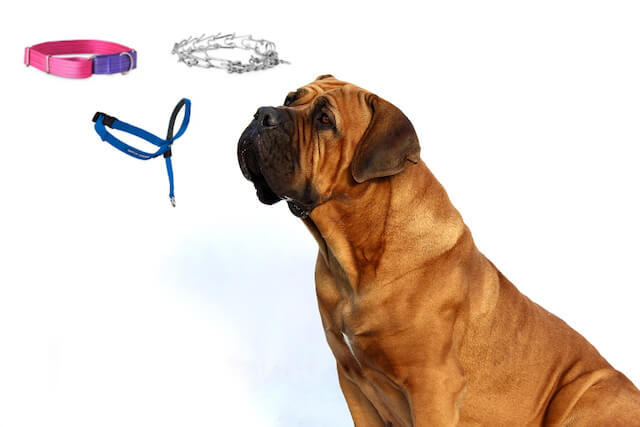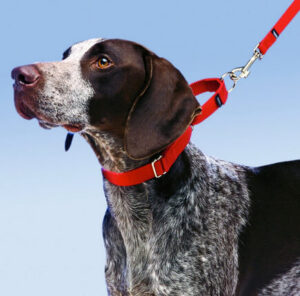Dog Training Collars: How to Select The Best Dog Collar
There are so many different kinds of dog training collars that it can be confusing to select what is best for your individual dog. How do you select a dog training collar and what should you look out for?

How to Select a Good Dog Training Collar?
A training collar or any other kind of training equipment is there is assist you with working with your dog. It should give the handler more control of the dog while allowing the dog to function normally and comfortably.
Each dog is an individual, and so what works for one dog might not for another. You cannot paint each dog with a broad brush stroke. Considerations for training equipment selection:
- Is your dog very large and powerful?
- Is your dog just a puppy beginning out?
- Does your dog have any behavioral issues like fear or aggression?
- Do you have a Houdini dog on your hands that is able to slip collars easily?
- Does your dog ignore you? Is generally stubborn and headstrong?
Thinking through various considerations about your dog’s personality, size, training level, handler’s ability, and lifestyle all helps determine what kind of dog training collar is best suited to an individual dog.
What is the Best Dog Training Equipment: Collars and More
For the average dog, all basic level training should begin on basic equipment. Even for beginning heel, all that is necessary is a flat collar. Training should be fun and motivationally based with toys and praise. Working with your dog this way means that more rigorous training collars are not necessary.
The best type of ‘training’ collar is called a Martingale-style collar. It is also sometimes referred to as a limited slip collar. This kind of collar gives a little more control to the handler, and when it is sized correctly, it is very difficult to slip out of. This makes it perfect for both fearful dogs and Houdini dogs, in addition to the regular pet.

What makes it so wonderful to use as a training collar is that it cannot hurt the dog, and it will never choke the dog. Yet, it gives a handler more control and security.
Other recommended training equipment includes head halters and the Easy Walk harness. If you have a very strong dog or a stubborn one, sometimes the best way to begin is with a head halter or Easy Walk harness as they give a higher level of control. A head halter is the most controlled piece of dog training equipment available. It works to control the head of the dog, much in the way a horse is led by a bridle.
As a note, puppies should always work on a flat collar until about 4-5 months of age. After that point, they may switch to other training collars.
What to Avoid and Why
There are many other training collars available that you will want to steer clear of. Traditional dog training collars like choke chains and pinch or prong collars are widely available but often misunderstood and misused.
Both choke chains and pinch collars are ‘correction’ collars, meaning that they are used to tell the dog when it is wrong. In theory, there is a place for this, but it is so often misused by the average person that it makes them dangerous.
Both types of collars can inflict pain. Choke chains choke the dog immensely, and scar tissue buildup in the neck is common, and you can even cause nerve damage or collapsed tracheas. Both collars are often also used to purposefully inflict punishment to the dog out of anger and frustration, which is never an appropriate part of training.
The electric or shock collar is being used more widely. Unfortunately, it is being used as a ‘quick fix’ remedy for a whole range of behavioral issues. This type of training device does not address what the underlying problem is or work to correctly fix it.
Not Sure?
If you’re not sure where to begin, start out with your dog’s flat collar as the starting point. Work in a motivational training program with toys and reward your dog often. If you think you might need more assistance, take a look at the head halter or Easy Walk Harness. Keep in mind, any training collar or piece of training equipment has to be used in conjunction with a good dog training program in order to be effective.
